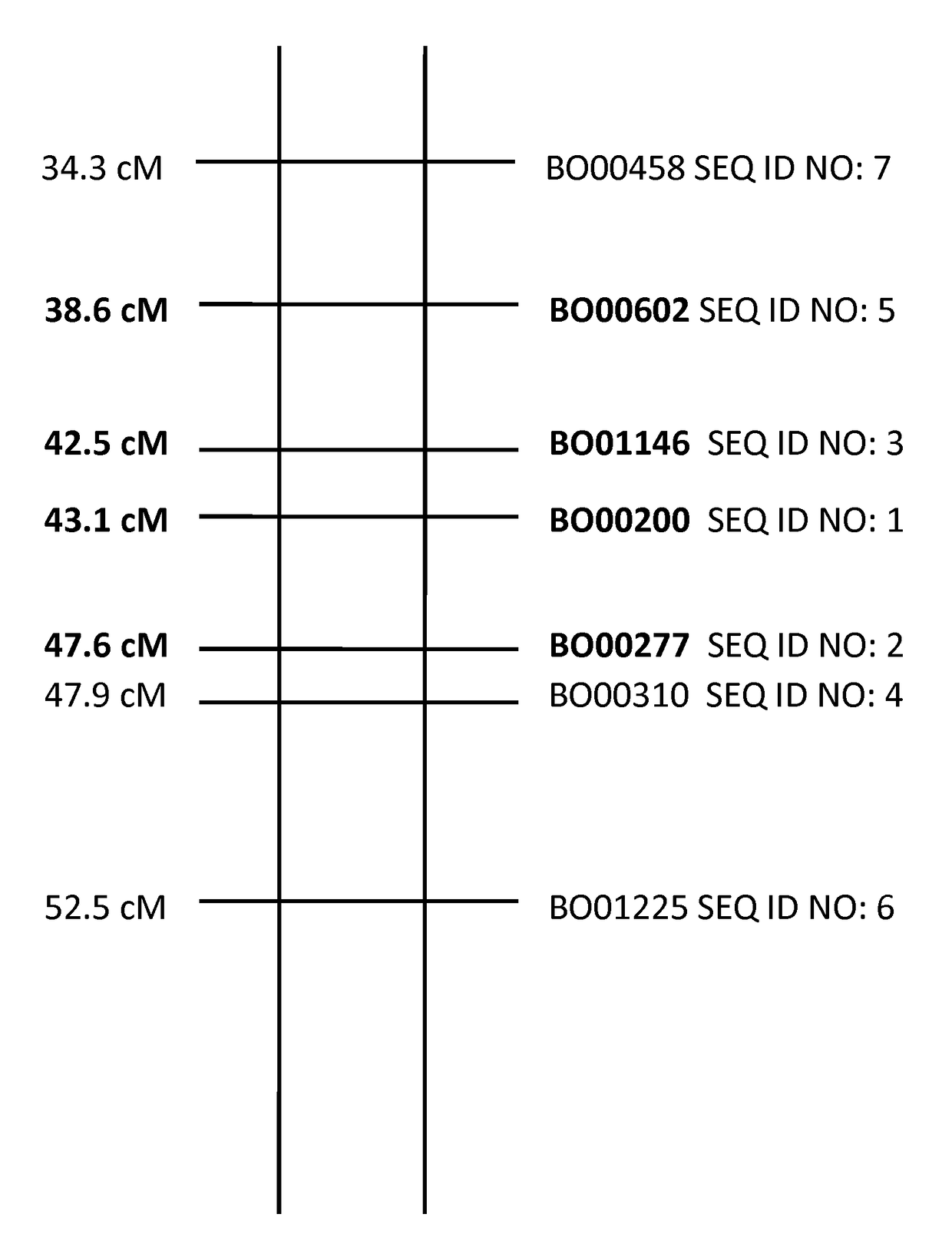Thrips resistant cabbage
a technology of thrips and cabbage, applied in the field of thrips /i > resistant cabbage, brassica plants, can solve the problems of huge differences in susceptibility between varieties, unfriendly environment, ineffective control of thrips in cabbage by applying insecticides, etc., and achieves the effect of not only being easy to incorporate, but also being resistan
- Summary
- Abstract
- Description
- Claims
- Application Information
AI Technical Summary
Benefits of technology
Problems solved by technology
Method used
Image
Examples
example 1
[0094]Thrips resistant plants of the invention were compared with susceptible plants and plants with an intermediate resistance in an open field trial. Plants were naturally infected by using an attractant species. In this trial leek plants were used as a natural attractant for thrips. For the skilled person it is known that also other plants can be used as an attractant for Thrips tabaci, such as onion or shallots.
[0095]Plants from variety Rinda and Hurricane were used in this trial as susceptible control plants. Plants from varieties Langendijker Bewaar, Tacoma, and Multima were included in this trial since they are known to be intermediately resistant against Thrips tabaci. As highly resistant plants of the invention, plants grown from seeds of seed lot AG6359-35 / 39 of which a representative sample was deposited with the NCIMB under NCIMB accession number 41760, as well as plants of three lines derived from plants grown from seed of the seed deposit that were selfed, were used. T...
example 2
Transfer of Thrips Resistance to Susceptible Plants
[0101]A thrips resistant plants of the invention AG 2973-35 (see Table 2 for resistance scores), was crossed with a susceptible plant FM 2979-01. Plants of the F1 were observed in a field trial as described in Example 1. No highly thrips resistant plants were observed.
[0102]From the F1 population a plant was selected which was selfed to obtain a population of F2 plants. The F2 was placed in a field trial as described in Example 1. Resistance scores are summarized in Table 4.
[0103]The segregation of the F2 population demonstrates that the inheritance of the resistance of the invention is comparable with that of a monogenic additive trait (highly resistant: intermediate resistant: susceptible=1:2:1). Depending on the genetic background of the susceptible parent plant there can be a different distribution between intermediately resistant and susceptible plants observed in the F2.
[0104]
TABLE 4ResistantIntermediatelySusceptibleF2 populat...
PUM
| Property | Measurement | Unit |
|---|---|---|
| resistance | aaaaa | aaaaa |
| frequency | aaaaa | aaaaa |
| time | aaaaa | aaaaa |
Abstract
Description
Claims
Application Information
 Login to View More
Login to View More - R&D
- Intellectual Property
- Life Sciences
- Materials
- Tech Scout
- Unparalleled Data Quality
- Higher Quality Content
- 60% Fewer Hallucinations
Browse by: Latest US Patents, China's latest patents, Technical Efficacy Thesaurus, Application Domain, Technology Topic, Popular Technical Reports.
© 2025 PatSnap. All rights reserved.Legal|Privacy policy|Modern Slavery Act Transparency Statement|Sitemap|About US| Contact US: help@patsnap.com

